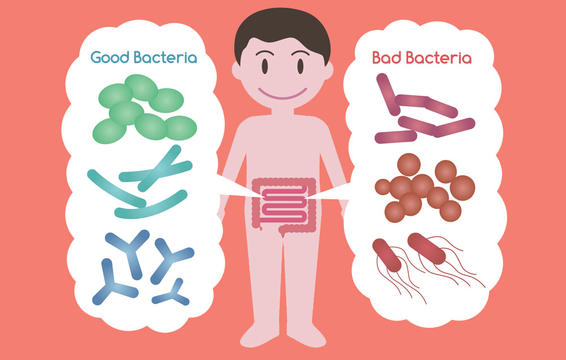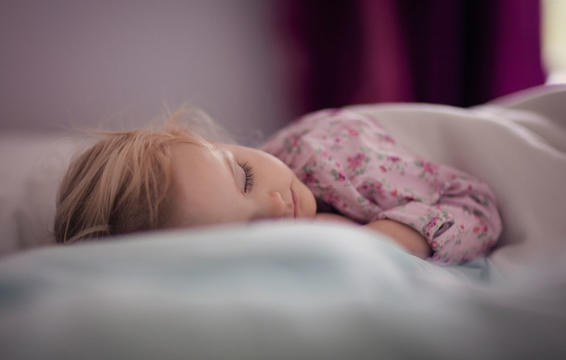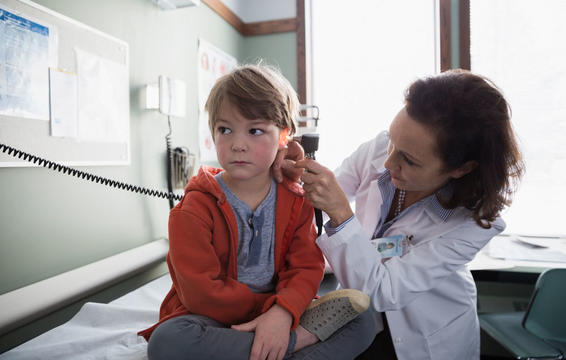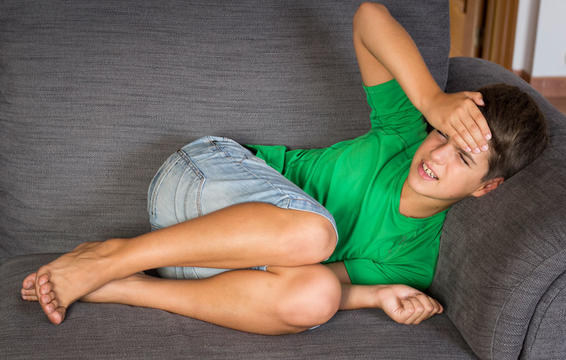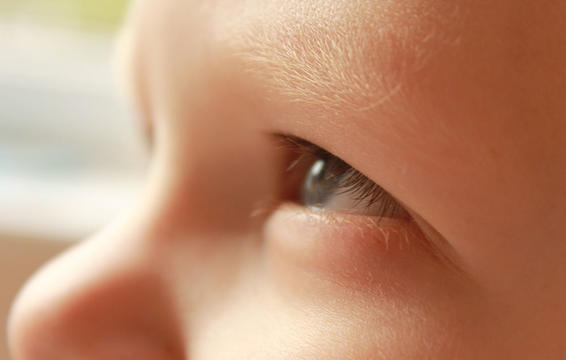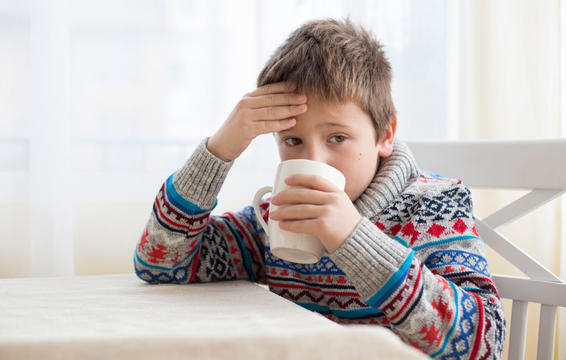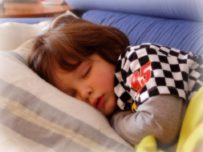Via Rodales Organic Life: Why More Parents Are Seeking Out Natural Cures For Their Kids—And 9 Cures To Try
In a 2002 study of 142 families at Emory University School of Medicine, 80 percent of parents who used alternative therapies for their kids relied on friends or relatives for information. Fewer than half discussed the treatments with their doctor.
In the U.S., complementary and alternative medicine for children is growing (estimates of CAM use are as high as 30 percent), but studies on safety and effectiveness are few; most have been done on adults. And because the FDA doesn’t evaluate herbal remedies before they hit the market, pediatricians are wary of suggesting them for the fragile, developing brains and bodies of kids. “I’m a fan of a natural approach where appropriate, but I’m still very cautious about recommending supplements for children,” says Russell Greenfield, MD, medical director of Carolinas Integrative Health, in Charlotte, North Carolina, and a coauthor of Healthy Child, Whole Child.
Still, there are some things Greenfield and other experts can recommend or advise against, and they’ve filled us in on the most promising treatments. Of course, you should consult your pediatrician before trying any method for the first time. Remember, just because something is “natural” doesn’t mean it’s safe. (When purchasing herbal remedies, it’s a good idea to check the brands and their safety ratings at ConsumerLab.com, which offers limited information for free and full-study results for a small annual fee.)
Boosting Their Immune System
Most parents have the healthy child basics covered: a daily multivitamin; a balanced, nutritious diet (OK, the vegetables are tough); and making sure their kids get adequate sleep and exercise. All the doctors we spoke with about fish oils and probiotics, however, recommended these supplements for overall health.
Fish Oil
Remember the daily spoonful of cod liver oil your mother (or grandmother) was given as a child, based on the notion that it was good for growing kids? Well, now we know there’s real science behind the practice. Fish oils are rich in essential fatty acids, including omega-3s, so they provide a powerful immune boost, explains Sezelle Gereau Haddon, MD, an ear, nose, and throat specialist based at the Center for Health and Healing in New York City. Studies have shown that taking fish oil can stave off colds and ear infections in children. “Doctors are now recommending it for depression, heart disease, ADHD, asthma…” she says. “I honestly think everybody should be taking it.” Make sure to buy a product that indicates it’s mercury-free on the label. (Also look for the words “pharmaceutical grade” and “distilled,” which mean that the product does not contain mercury or other metals, PCBs, dioxins, or other impurities.)
Probiotics
They’re the healthy bacteria, such as acidophilus and lactobacillus, found in yogurt. “A balance of bacteria is normally present in our intestines,” Greenfield says, “but that milieu can change for all sorts of reasons—stress, inadequate diet, and the use of antibiotics. By taking a daily probiotics supplement, we’re reintroducing healthful bacteria.” Studies have shown that probiotics can prevent or lessen the severity of gastrointestinal viruses (particularly those that cause diarrhea), eczema, food allergies, and asthma; there is even evidence that they may help prevent tooth decay. Both fish oil and probiotics are sold in forms for kids ages six months and older and come with instructions on dosages.
Keeping Colds And Flu At Bay
Colds are usually passed from person to person by touching contaminated objects, including doorknobs or toys. So basic measures, such as making sure your kids wash their hands often, can go far toward lessening the number of sick days at your house. Could an herbal supplement help too?
Oscillococcinum
Many people swear by this homeopathic preparation when they feel the flu coming on. Homeopathy is safe, say all the doctors we spoke to. But whether it works—and how—are other questions. “Homeopathy has been found to be effective for some medical conditions in well-designed studies,” says Timothy Culbert, MD, medical director of Integrative Medicine and Cultural Care at Children’s Hospitals and Clinics in Minneapolis and Saint Paul. “But we are not completely certain as to how it works. And that makes doctors nervous.”
Homeopathic medicine is based on the idea that “like cures like.” So if your symptom is vomiting, you take a preparation that causes vomiting—but the medicine is diluted in water to the power of a billion or more. “The very concept that a remedy so dilute could have a therapeutic effect goes against modern science,” Greenfield says. Bottom line: It’s safe to try oscillococcinum, but there are no guarantees it will work.
Quieting a Cough
The traditional remedy is cough syrup, but many kids hate the taste. Doctors also have reservations. “If a cough isn’t causing your child to lose sleep or appetite, current research suggests that leaving it alone is the best medicine,” says Lawrence Rosen, MD, director of Integrative Pediatric Services at Maria Fareri Children’s Hospital in Valhalla, New York. Cough medicines can have quite a few side effects, he adds, including hyperactivity and heart palpitations. So what else is helpful?
Herbs
As a good alternative for children older than six months, Paula Gardiner, MD, a research fellow in Complementary and Integrative Medical Therapies at Harvard Medical School, recommends essential oils or teas made from dried herbs. Choose expectorant herbs, such as thyme, eucalyptus, mint, pine, licorice, and anise, for a cough that’s productive (bringing up mucus). To soothe a nonproductive cough, also try thyme, as well as slippery elm, peppermint, or lemon balm. To make a tea, put a teaspoon of an herb in a cup of boiling water; for ice pops, let the tea cool, mix 12 cup with a little juice, then freeze in ice pop molds. You can add a drop or two of an essential oil to 12 cup of massage oil, and gently rub the mixture into your child’s chest and back. Cough drops with slippery elm or licorice will also give some relief.
Easing Kids To Sleep
Getting your child to bed can be a daily struggle—kids can have a hard time settling down. And, of course, they know how to prolong the nightly ritual with calls for one last glass of water or another bedtime story. Try:
Aromatherapy
For kids of any age, place a few drops of agood-quality calming essential oil (such as lavender or sweet orange) on a handkerchief, Gereau Haddon suggests. Tie the hankie near your child’s bed—but not so close that he can reach it and put it in his mouth, since the oils can be toxic in high doses. You can also put a drop or two into a massage oil, on your child’s pillow, or in a diffuser.
Melatonin
This is a hormone our bodies produce to regulate our sleep-wake cycle; it is sold as a supplement (purchase only a synthetic kind). “For children older than two, I often recommend taking one-half to three milligrams an hour before bedtime,” Rosen says.
Mind-Body Techniques
“We teach parents to use mental imagery with their kids,” Culbert says. After a bedtime story, try talking to your child about her favorite place—a beach or any other safe and calm location. Help her focus on her breathing as a way to slow nervous energy.
Eradicating Ear Infections
Pediatricians are treating fewer ear infections with antibiotics. Recent guidelines from the American Academy of Pediatrics say that for kids older than two, doctors should hold off on antibiotics for the first two days while treating the pain. If the child begins to feel better during that time, no antibiotic is needed. This approach, which helps prevent the overuse of antibiotics—and thus the growth of antibiotic-resistant bacteria—is based on the fact that the many ear infections caused by viruses aren’t helped by antibiotics; they get better on their own. Only kids who have bacterial ear infections require a prescription. Nothing can replace antibiotics if they’re necessary, but below are a few smart prevention and treatment strategies.
Better Baby Care
Get rid of your baby’s pacifiers. When he sucks on one, it can create pressure on his eardrums. Also make sure your child is upright when bottle-feeding, so milk doesn’t drip into the ear canals, setting up a bacteria-friendly environment.
Fish Oil
A daily dose of fish oil can make a difference, because “it influences the immune system to produce cells that help kill off an infection,” Gereau Haddon says. “It’s also a great anti-inflammatory.” In a study of 94 children, ages six months to five years, the half given cod liver oil and a multivitamin daily for six months had fewer doctor visits for upper respiratory infections (including ear infections) during that time than the half who didn’t take supplements.
Craniosacral Therapy
This technique has shown promise with children ages six months and older who get chronic ear infections. It involves a licensed practitioner, often an osteopath, very gently manipulating your child’s head, neck, and back to enhance the functioning of the membranes and fluid around the brain and spinal cord. “Ear infections could be a sign of the eustachian tube in the ear needing realignment,” Gereau Haddon explains. A recent study at Oklahoma State University found that children with recurrent ear infections who received osteopathic manipulation as well as routine pediatric care had fewer infections and were less likely to need ear tubes than those who received just routine care. Go to the Web site of the International Association of Healthcare Practitioners, for referrals to craniosacral therapists.
Handling Asthma
To keep his asthma under control, your child takes his medication every day and stays away from triggers such as dust, pollen, and cat and dog dander. But studies have shown that using mind-body techniques to get your child to relax also can reduce the frequency and severity of asthma attacks. “The anxiety caused by not being able to get a deep breath can make it even more difficult to breathe,” Culbert says.
Yoga
“We’ve found yoga to be very beneficial, especially in teaching the sort of deep abdominal breathing we want children with asthma to use,” Culbert says. He recommends the YogaKids video series.
Biofeedback
In a 2004 study at the Robert Wood Johnson Medical School in Piscataway, New Jersey, adult patients using biofeedback needed less medication and had fewer symptoms and better lung function. Culbert says that biofeedback is good for kids ages six and older too. Here’s how it works: In weekly sessions, biofeedback machines pick up on activity in the body and display it visually on a screen. Patients can then use that information to try to control their physical reactions. For example, an asthmatic child may see a black-and-white picture of a forest on the screen, and as she relaxes, bringing her heart rate and breathing under control, it fills in with color. A biofeedback practitioner teaches her the relaxation exercises, and the child can use these techniques during real-life situations. Sessions may cost from $50 to $200 and are often covered by insurance.
Relieving Headaches
Migraine headaches often run in families. Food or stressful situations may be triggers, but the cause can be difficult to pinpoint. And for kids with chronic or severe migraines, pain medications may not give complete relief, so mind-body relaxation techniques can help here as well.
Acupuncture
This Chinese remedy involves a practitioner inserting ultrafine needles into specified points on the skin, releasing endorphins and reducing the perception of pain. In a 2000 study on teenagers with chronic pain problems (some suffered from migraines), 70 percent said that acupuncture definitely helped their pain, and 67 percent found it a pleasant experience. Acupuncture is appropriate for ages five and up, but if a child is too squeamish, Culbert says, she can first try acupressure, which involves using finger pressure on various points.
Biofeedback
More than 20 studies using biofeedback to combat headaches in kids have been published in the past 30 years. And most have shown significant improvement—at least a 50 percent reduction in pain—for the majority of study participants, according to a published review by Kathi Kemper, MD, author of The Holistic Pediatrician.
Keeping Skin Healthy
Pimples and acne are tough to deal with, but mild cases can benefit from a holistic approach, Greenfield says. “In addition to hormonal changes, acne can be a manifestation of stress—which teenagers don’t always know how to manage,” he explains. It might take some prodding from you or another influential grown-up, but encourage your teen to try exercise, yoga, or meditation. Other strategies:
Fish Oil
To decrease inflammation in kids older than age 12, Greenfield recommends a two-month trial of 1,500 to 2,000 milligrams daily of a fish oil supplement containng both EPA and DHA omega-3 fatty acids.
Tea Tree Oil
Try cleansers or creams with tea tree oil, Culbert says. Its antibacterial and skin-healing properties work just as well as benzoyl peroxide but cause less dryness and redness. (The herbal preparation does work more slowly, however.) Calendula, an anti-inflammatory herb, is another ingredient to look for.
Dietary Changes
“Some individuals are more sensitive to dairy and sugar, making them prone to breakouts,” Greenfield says. Try eliminating these. The information in this article is not meant to be comprehensive or to substitute for your own doctor’s advice.
How To Find A Savvy Doctor
The number of pediatricians in the United States who have training in alternative treatments is growing. The American Academy of Pediatrics has a new Complementary, Holistic, and Integrative Pediatrics section, which will present educational programs and highlight research in alternative medicine for all its pediatricians. Every year, the Program in Integrative Medicine at the University of Arizona, run by Andrew Weil, MD, certifies 50 health care professionals (including pediatricians). But the key is still communication. “It would be great if your child’s doctor were someone who considered non-Western and other nature-based methods of healing,” says Russell Greenfield, MD. “But having a competent doctor who is respectful of your values and is open to new ideas is the most important thing.”
The Herbal Tea Rx
A soothing cup of tea is a safe way to treat many of your child’s minor ailments. Use prepared tea bags or a teaspoon of the dried herb in a cup of boiling water.
Symptom: Upset stomach; colic and crankiness in babies
Herb: Chamomile
For Ages: Six months and older
Try: Celestial Seasonings Chamomile
Symptom: Constipation
Herb: Senna
For Ages: 1 year and older
Try: Traditional Medicinals Smooth Move
Symptom: Sore throat
Herb: Licorice, slippery elm
For Ages: Three years and older
Try: Traditional Medicinals Throat Coat
Symptom: Generally unwell
Herb: Green tea (decaf)
For Ages: Five years and older
Try: Choice Organic Teas



